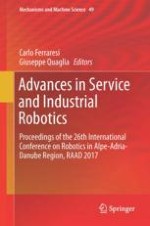This volume contains the proceedings of the 26th International Conference on Robotics in Alpe-Adria-Danube Region, RAAD 2017, held at the Polytechnic University of Turin, Italy, from June 21-23, 2017. The conference brought together academic and industrial researchers in robotics from 30 countries, the majority of them affiliated to the Alpe-Adria-Danube Region, and their worldwide partners. RAAD 2017 covered all major areas of R&D and innovation in robotics, including the latest research trends. The book provides an overview on the advances in service and industrial robotics. The topics are presented in a sequence starting from the classical robotic subjects, such as kinematics, dynamics, structures, control, and ending with the newest topics, like human-robot interaction and biomedical applications. Researchers involved in the robotic field will find this an extraordinary and up-to-date perspective on the state of the art in this area.
